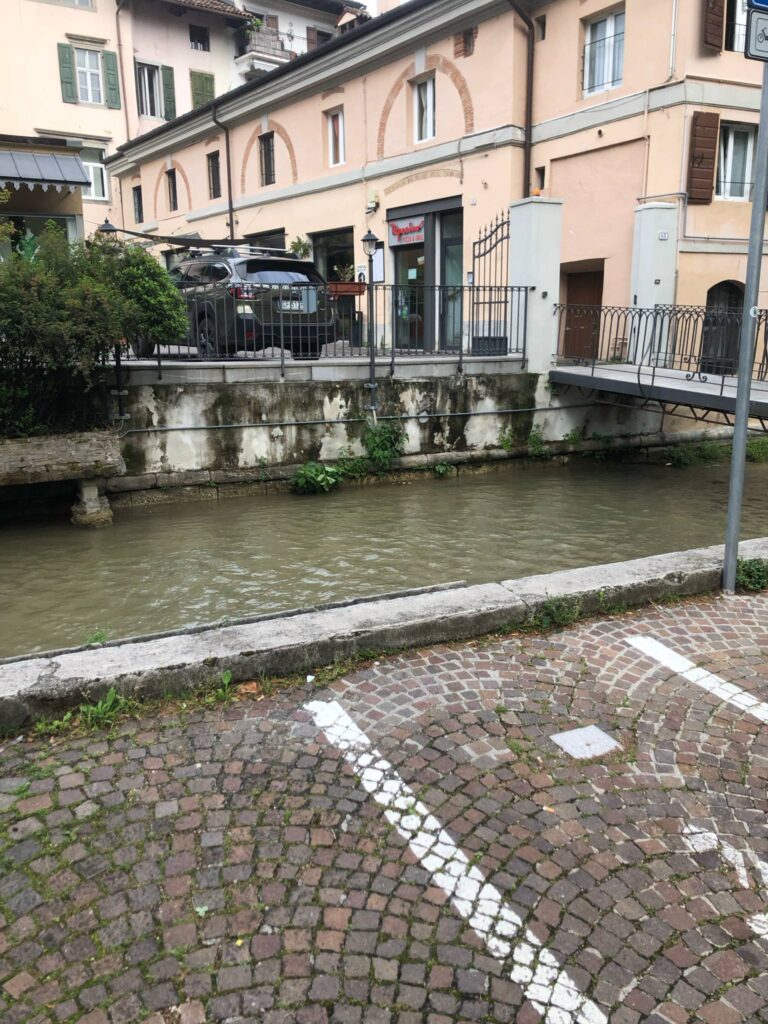Roman Ruins
- The Influence of Roman Ruins on Udine
Roman ruins had a small but noticeable influence on the city of Udine. However, Udine itself was not a major Roman settlement. Its development, however, was connected with settlements such as Aquileia and Cividale del Friuli.
Ancient Roman walls have influenced the shape of the roads in Udine today. Although the walls were dismantled in the 19th century, modern streets now form a semicircular ring around the historic center of Udine. This ring is colloquially known as the “anello delle mura” (ring of the walls).
In summary, the main influence of Roman ruins is noticeable in the layout of the roads. - Which Ruins Can Be Found
- Via Zanon: Remains of a house in the center of Udine. Fragments of walls, floor mosaics, and even the layout of the rooms—typical of Roman villas—have been found. These ruins may date back to the 1st–3rd centuries AD. This house is evidence of Udine’s connection with Aquileia. The site is properly protected and preserved.
- Fragment of a Roman Road (near Via Pracchiuso):
The road was built using typical Roman paving stones (basoli).
It is possible that it led to local dwellings. Its existence has been confirmed by various archaeological studies.
Heritage
In Udine, historical heritage is not just about looking at old monuments—it’s something you can feel is present and alive. This shows that the history of the place is not dead. Even today, you can still see many historical landmarks, such as ancient roads, even in museums. It is precisely this that attracts tourists to Udine.
Hidden Gems
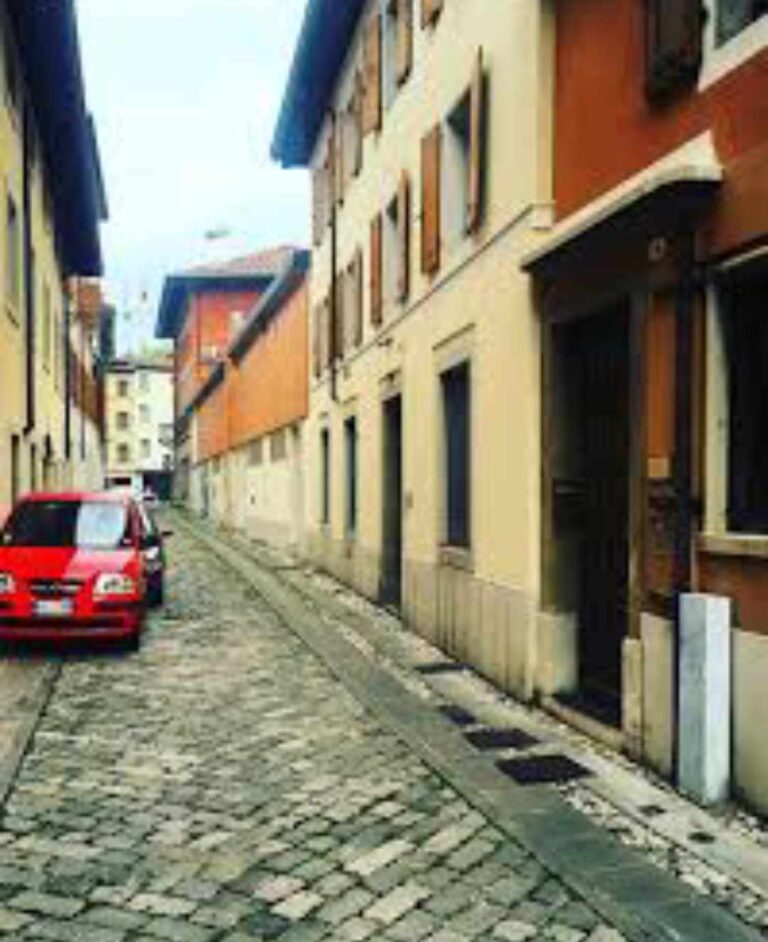
- Via del Sale is a small, narrow cobblestone street tucked between larger roads in the center of Udine, near Piazza Matteotti. It was once part of a trade route used to transport salt from the coastal areas of Friuli. To this day, it has preserved its charm and distinctive appearance.
- Corte Savorgnan Courtyard is a beautiful, lesser-known courtyard surrounded by noble buildings. It is a quiet spot with beautiful, soft lighting. It once belonged to the influential Savorgnan family, who were connected to Venice. Today, it occasionally hosts performances by local artists.
- La Bottega Della Ceramica is a small workshop located just off Via del Sale, run by a woman who is both a local resident and an artist. She handcrafts ceramics inspired by Venetian and Friulian styles. You can buy plates, cups, and other items there.
Venetian Ruins and Their History
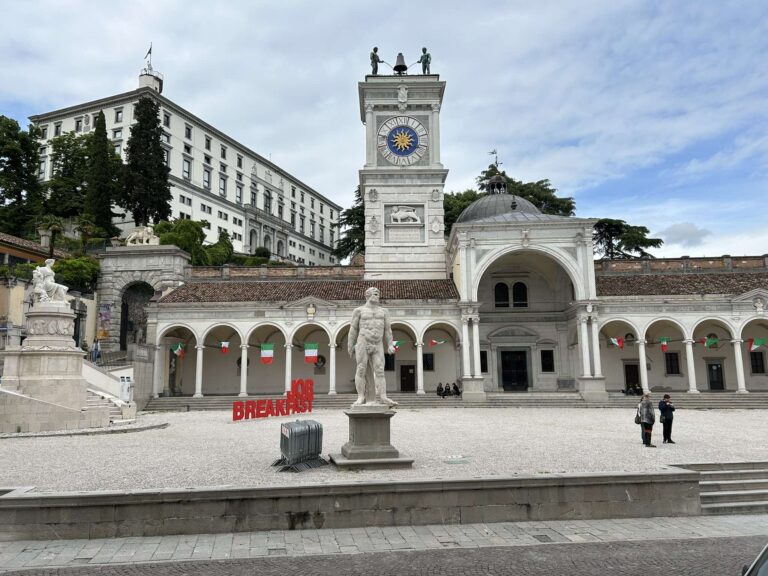
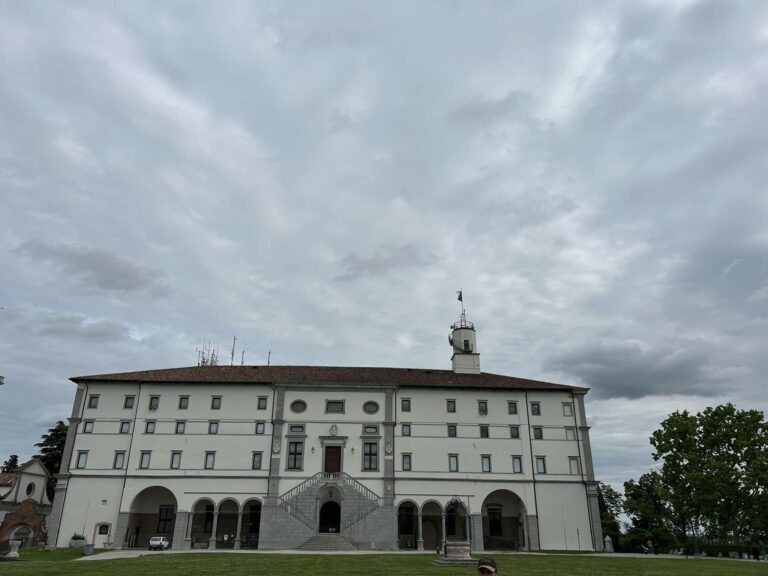
Udine, which was also under the control of the Venetian Republic, was significantly influenced not only itself but as part of the entire region.
- Udine Castle (Castello di Udine)
Located on a hill in the center of the city, where Roman fortifications once stood, the castle reflects the Venetian style typical of the 16th to 17th centuries. It once belonged to the Venetian Capitano (governor) and served as the regional administrative center. - Piazza della Libertà
This is the oldest and most fascinating square in Udine, located at the foot of the castle hill. It is often referred to as the most beautiful square in Venetian style.
On this square, you can find famous Venetian-style buildings such as the Loggia del Lionello, Torre dell’Orologio, and Loggia di San Giovanni.
The square historically served as the center of political life and today stands as a full symbol of Venetian architecture.
Piazza della Libertà had different names in earlier periods:
- Middle Ages: Piazza del Comune
Venetian Era: Piazza Contarena
- 19th Century (after the unification of Italy): Piazza Vittorio Emanuele
- After World War II: it was named Piazza della Libertà
Piazza Matteotti
Formerly known as Piazza San Giacomo, this is the most important Venetian-style market square in the city. It is beautifully enclosed by arcaded townhouses in the Venetian style.
Historically, it functioned as a venue for markets and trade in goods like cheese and wine. Today, markets are still held there.
Udine canals
Two rivers flow into Udine: the Torre River, which enters the city from the northeast, and the Cormor River, which flows in from the northwest. These two rivers merge on the southern outskirts of Udine, forming a “single” river that then continues toward the Tagliamento River.
This confluence of rivers played a crucial role in various aspects of the city’s development—especially in flood protection, industrial growth, and agriculture. They powered water mills and workshops of artisans, and even allowed for the transport of small goods using boats. Most importantly, they provided the city with access to water.
The rivers are also visually stunning, with water that often appears light blue in color. Thanks to these rivers, a local hydroelectric source was created, which powered street lamps—making Udine one of the first cities in the world to be illuminated by electric light in the 19th century. This was a remarkable technological advancement at the time.
The rivers differ from one another:
- The Torre River is a perennial river with its source in the Carnic Alps.
- The Cormor River was more seasonal in nature, though it is now partially regulated. Its sources come mainly from rainfall and surface runoff.
Additionally, the rivers served another important function: defense.
Austrian Empire influence
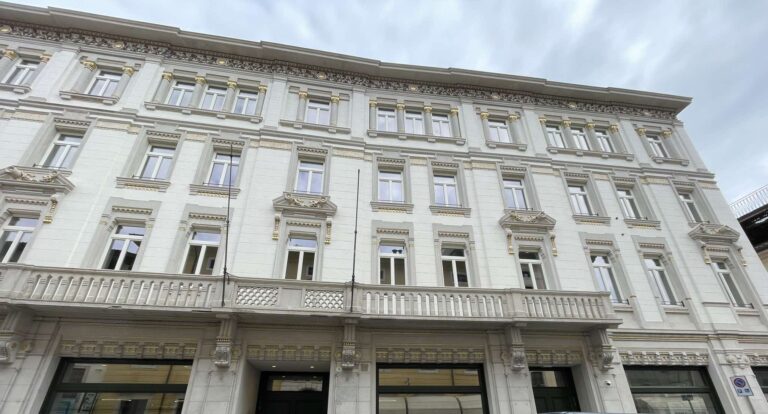
Due to the control and influence of the Austro-Hungarian Empire, Udine underwent noticeable changes. These influences are still visible today:
- Neoclassical and military architecture—such as barracks and military warehouses.
- Urban layout and streets—became more concentrated and organized, resembling those found in Central Europe.
- Language and administration—unfortunately, during this period, Udine was required to adopt German as the official administrative language and follow the Austrian administrative order.
- Cuisine and culture—the Austrians attempted to impose their cultural and culinary customs, which was burdensome for people associated with different traditions.
However, the Austrian period was shorter and had less impact compared to the Venetian era.
Most influencial architecture style
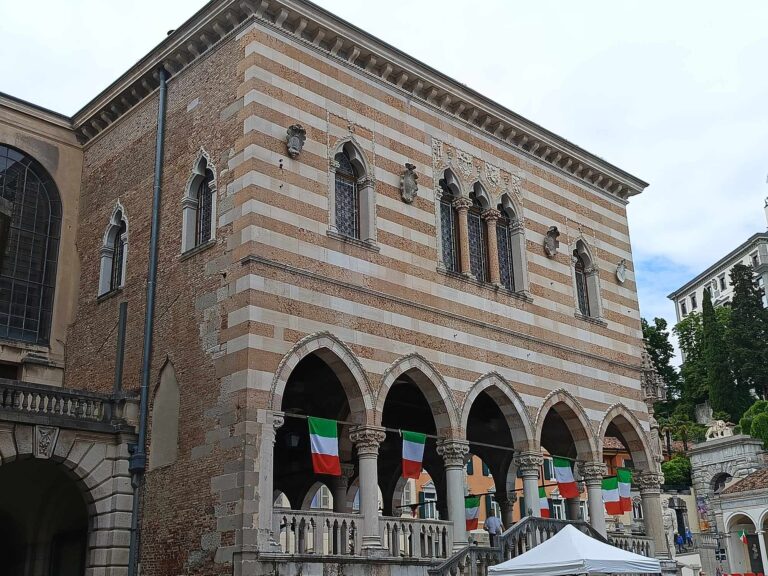
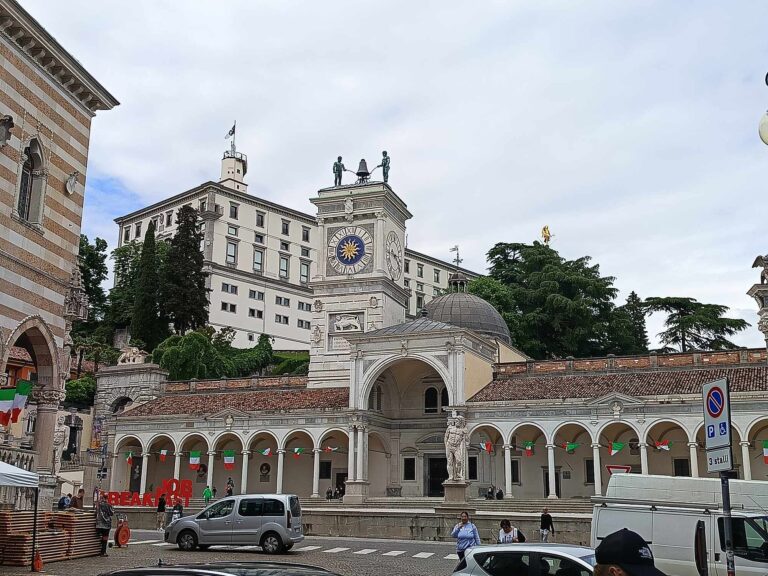
It’s undeniable that Venetian influence was the strongest and most visible in Udine. Thanks to this legacy, we can still admire landmarks such as:
- Piazza della Libertà
- Loggia del Lionello
- Torre dell’Orologio
- The Lions of St. Mark
It was the Venetians who transformed Udine into an administrative and military center. These buildings most closely resemble the architecture of Venice. They introduced Venetian Renaissance and Gothic styles to the city.
Roman influence was less prominent, but important trade routes passed through the area. The remaining Roman heritage includes:
- Ruins of Roman houses, such as those on Via Zanon
- Artifacts in the Museo Archeologico (located in the castle), including coins, ceramics, and more
- Most importantly, street plans—in certain areas, the layout of ancient Roman roads can still be seen in today’s streets.
In summary, Udine is a blend of various architectural styles.
Lorem ipsum dolor sit amet, consectetur adipiscing elit. Ut elit tellus, luctus nec ullamcorper mattis, pulvinar dapibus leo.
Placement of the Gate
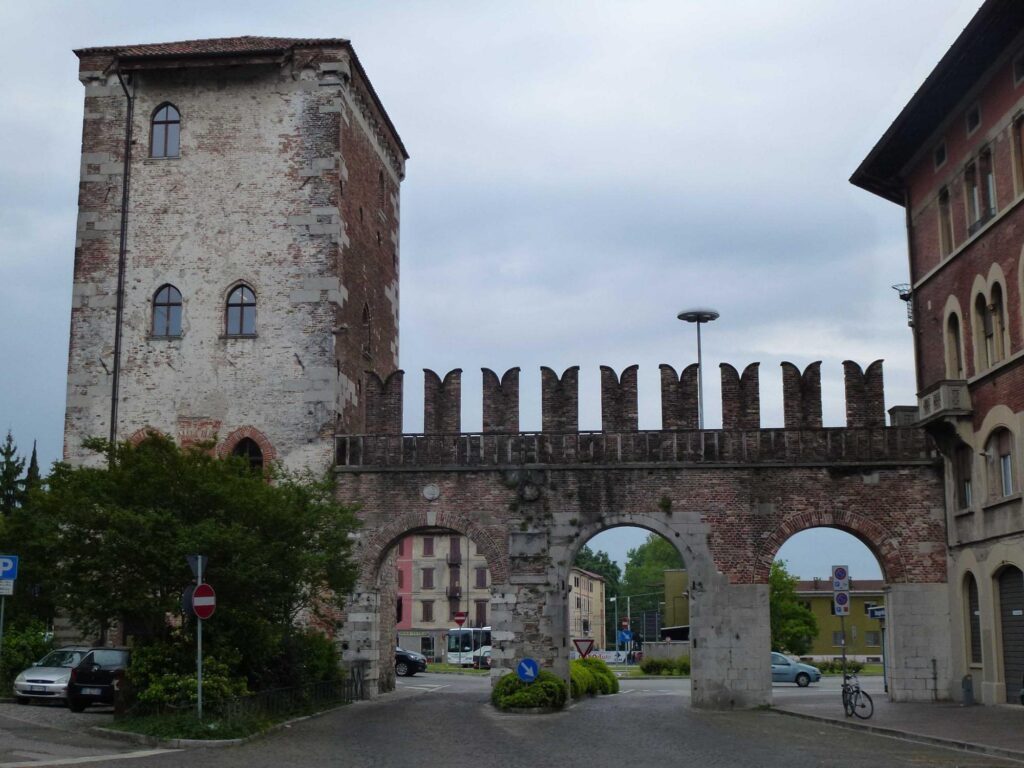
Porta Aquileia is a gate that changed its location over time. Originally, it stood along the road leading to Aquileia, which is to the south of Udine.
Its function was to serve as part of the medieval and later city walls, which provided vital protection for the city.
An interesting fact is that the gate was dismantled in the 19th century, when the city’s fortifications were taken down. Fortunately, its remnants and fragments were later reconstructed, and today the gate stands near Via Aquileia.
The architectural style of the gate is a blend of Gothic and Classicism, featuring elements such as coats of arms and commemorative plaques.
Lorem ipsum dolor sit amet, consectetur adipiscing elit. Ut elit tellus, luctus nec ullamcorper mattis, pulvinar dapibus leo.
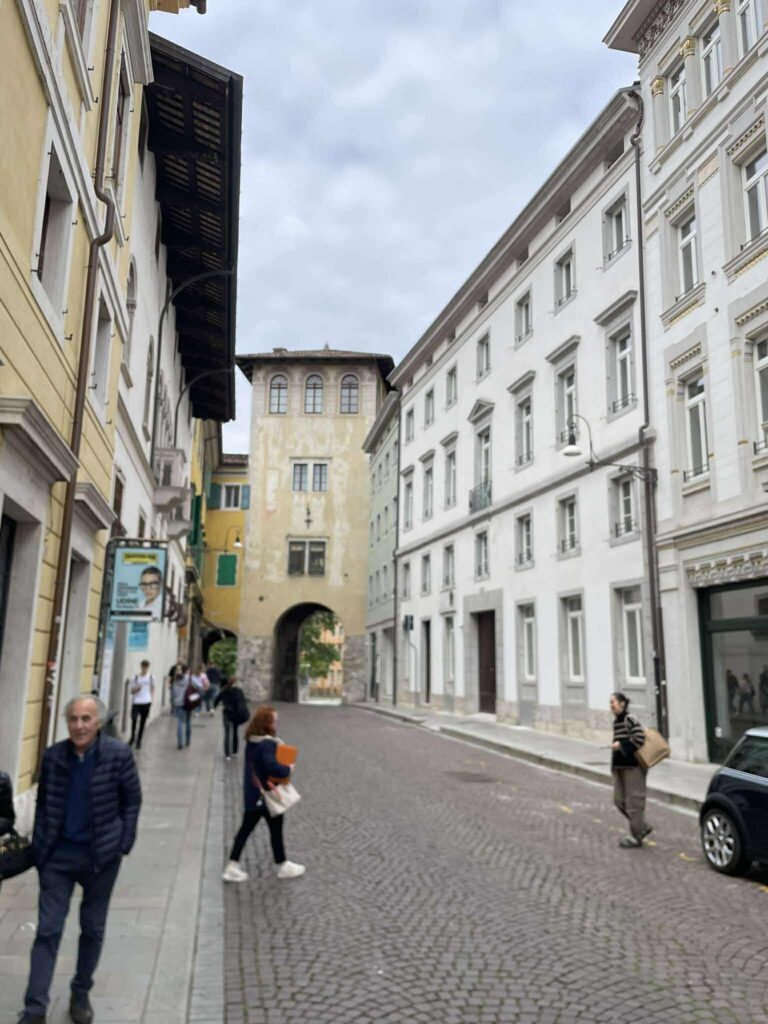
Porta ManinorTorre di San Bartolomeoor Porta Cividale is the oldest surviving tower in the city.
It was built between 1273 and 1299 and was part of the third circle of walls surrounding the city. It is the second oldest tower in Udine that remains intact after the Clock Tower. It was originally dedicated to San Bartolomeo.
Best dinning and ice cream places
Today, Udine offers many great places and events for both tourists and locals, especially when it comes to food. Some of the highlights include:
- STREEAT Food Truck Festival—an event where numerous food trucks gather at Piazza Primo Maggio, offering a wide variety of dishes.
However, some of the best food trucks are:
- Osteria da Dalia 3.0
- My Piadina
- Osteria da Dalia 3.0
For the best Italian ice cream, you can visit:
- Omballo Gelateria Fiordilatte
- OGGI Gelato Udine
- Accademia del Gelato
Omballo Gelateria Fiordilatte
OGGI Gelato Udine
Accademia del Gelato
But it’s also important to try the local dishes, such as:
- Frico—a fried cheese pancake
- Cjarsons—handmade dumplings with a sweet and savory filling
And Gubana—a cake filled with a mixture of nuts, raisins, cocoa, honey, and grappa.
Lorem ipsum dolor sit amet, consectetur adipiscing elit. Ut elit tellus, luctus nec ullamcorper mattis, pulvinar dapibus leo.

